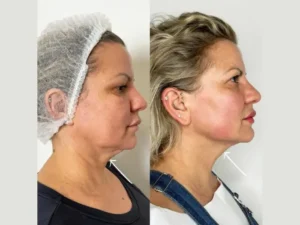
The shape and position of the ears play an important role in the balance and harmony of facial appearance. For individuals who feel self-conscious about protruding or asymmetrical ears, modern cosmetic techniques offer safe and effective solutions. One such method is Otoplasty in Dubai, a refined procedure designed to reshape the cartilage of the ear to create natural, aesthetically pleasing contours. Understanding how cartilage reshaping works is essential to appreciating the artistry and science behind this specialized treatment.
Understanding Ear Cartilage
The human ear is composed primarily of cartilage, a flexible yet firm tissue that maintains its shape while allowing slight movement. This cartilage forms the outer ear structure (also known as the pinna or auricle) and is covered by thin skin.
Key characteristics of ear cartilage include:
- Flexibility: Unlike bone, cartilage is malleable and can be repositioned.
- Strength: Despite its flexibility, it maintains structural integrity.
- Memory Effect: Cartilage has a natural tendency to revert to its original shape, which is why skilled surgical reshaping is essential.
The Role of Cartilage in Ear Shape
The ear’s unique curves, folds, and ridges are all determined by cartilage. When the natural formation of this cartilage is irregular, the ears may appear prominent, uneven, or lack the folds that typically create a refined shape. Otoplasty addresses these irregularities by carefully adjusting the cartilage.
Common cartilage concerns corrected by reshaping include:
- Lack of defined folds in the ear
- Overly prominent or protruding ears
- Uneven or asymmetrical ear shapes
How Otoplasty Reshapes Cartilage
Cartilage reshaping is at the heart of otoplasty. The procedure involves precise sculpting techniques that alter the structure of the ear to achieve natural balance and proportion.
Cartilage Modification
| Technique | Purpose | Effect on Ear Shape |
|---|---|---|
| Cartilage Scoring | Weakens cartilage in specific areas | Creates natural folds and curves |
| Cartilage Suturing | Secures cartilage in a new position | Reduces protrusion and refines alignment |
| Cartilage Trimming | Removes excess cartilage | Corrects overly large or irregular structures |
| Cartilage Folding | Bends cartilage into the desired shape | Restores symmetry and proportion |
Why Cartilage Can Be Reshaped Effectively
Cartilage is uniquely suited to reshaping because it is firm enough to maintain structure but pliable enough to be sculpted. Once repositioned and supported through sutures or folds, it adapts to its new contour, giving the ear a lasting and harmonious appearance.
The Aesthetic Goals of Otoplasty
Beyond the technical reshaping of cartilage, the goal of otoplasty is to bring harmony to the face. The ears should complement the natural proportions without drawing unnecessary attention.
- Creating a natural fold known as the antihelical fold
- Ensuring the ears lie closer to the head without appearing unnatural
- Balancing symmetry between both ears
- Preserving the individuality of the patient’s ear shape while reducing prominent features
Benefits of Cartilage Reshaping in Otoplasty
| Benefit | Description |
|---|---|
| Improved Ear Symmetry | Balances uneven or irregular ears |
| Natural Contours | Restores natural folds and curves |
| Enhanced Confidence | Reduces self-consciousness about ear appearance |
| Facial Harmony | Creates balance between ears and facial features |
| Permanent Enhancement | Results are designed to last long-term |
FAQ’s
Can cartilage be reshaped at any age?
Cartilage reshaping through otoplasty is most effective once the ears have fully developed, usually around age five or older. Adults can also benefit, as cartilage remains moldable throughout life.
Does reshaping cartilage change the ear’s function?
No. Otoplasty reshapes the external ear for aesthetic purposes and does not affect hearing or ear function.
Will the cartilage return to its old shape over time?
When otoplasty is performed using advanced techniques, the cartilage adapts to its new position. Proper sculpting and stabilization ensure lasting results.
Are both ears always reshaped during otoplasty?
Even if one ear is more prominent than the other, both ears are usually adjusted to maintain symmetry and balance.
What makes cartilage reshaping look natural?
The natural result comes from carefully creating folds and curves that mimic the ear’s original anatomy while enhancing proportion.
Conclusion
Otoplasty reshapes cartilage in the ear by using advanced sculpting, folding, trimming, and suturing techniques that restore balance, symmetry, and harmony to facial appearance. By understanding the natural structure of cartilage and applying a precise combination of science and artistry, cosmetic specialists create results that look both natural and long-lasting. For those seeking trusted expertise in ear reshaping, Dynamic Life Clinics offers a refined approach to otoplasty that emphasizes aesthetics, safety, and patient satisfaction.



